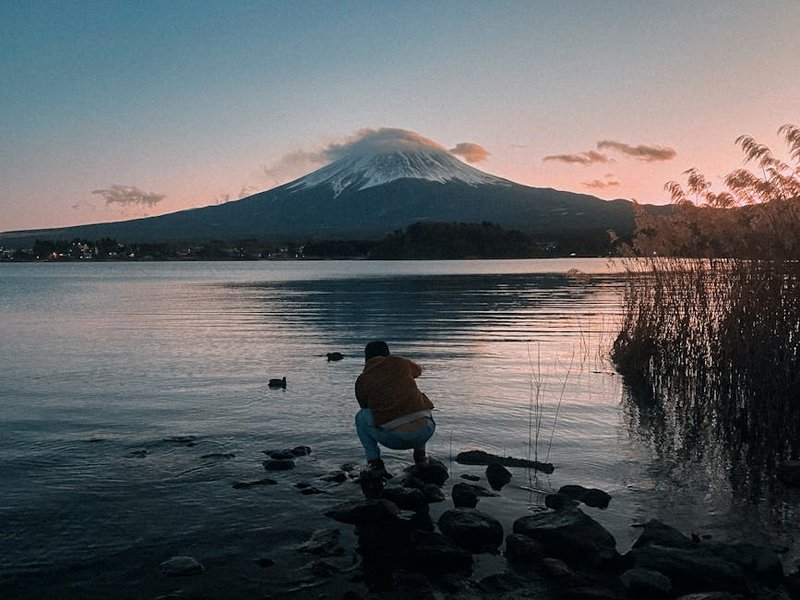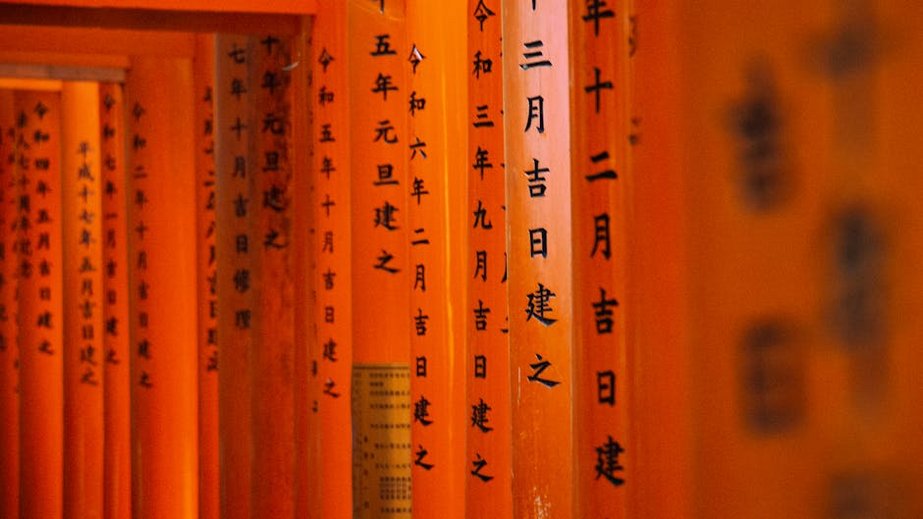Meditation in Japanese Mountain Temples
Meditation in Japanese mountain temples offers a profound journey into tranquility and self-discovery that few other travel experiences can match. Imagine waking before dawn to the sound of temple bells echoing through misty valleys, sitting in perfect silence as the first light touches ancient wooden structures, and sharing simple meals with monks who have dedicated their lives to spiritual practice. This isn’t just another item for your travel bucket list—it’s a transformative experience that combines Japan’s breathtaking natural beauty with centuries-old Zen traditions. Whether you’re seeking stress relief, cultural immersion, or deeper spiritual connection, meditation retreats in these sacred spaces provide the perfect environment for inner peace. The combination of strict discipline and breathtaking scenery creates an atmosphere where even complete beginners can experience moments of profound clarity and calm that stay with them long after they return home.
Meditation in Japanese Mountain Temples – Essential Information
Before embarking on your spiritual journey, understanding the fundamental aspects of temple meditation retreats will help you prepare mentally and practically. These retreats, known as ‘shukubo’ temple stays, follow traditions dating back centuries, particularly in the Zen Buddhist tradition. Most temples require advance booking, often several months ahead for popular locations, and have specific rules regarding behavior, dress code, and participation in daily activities. Unlike Western meditation centers, these experiences are deeply integrated with monastic life, meaning you’ll participate in chanting, work duties, and ritual meals alongside meditation sessions. The physical environment itself—often featuring minimalist tatami mat rooms, rock gardens, and breathtaking mountain views—becomes part of the practice, encouraging mindfulness at every moment. Most temples welcome international visitors but maintain their traditional practices, creating a unique cultural exchange that’s both challenging and rewarding.
Types of Temple Stays – What You Need to Know
- Zen Meditation (Zazen) Focus: These retreats emphasize seated meditation with strict posture guidelines, often including walking meditation (kinhin) and sometimes intense multi-day retreats called sesshin
- Shingon Buddhist Practices: Found particularly on Mount Koya, these incorporate esoteric rituals, mantra chanting, and fire ceremonies alongside meditation sessions
- Tendai Mountain Asceticism: For the more adventurous, some temples offer practices involving meditation while hiking sacred mountains or standing under waterfalls
- Beginner-Friendly Options: Many temples now offer shorter introductory programs (1-2 nights) with English guidance specifically designed for international visitors
- Budget Option ($80-120/night): Basic temple stays including meditation sessions, simple vegetarian meals, and minimal facilities; often shared bathrooms and sleeping on futons in shared rooms
- Mid-Range Option ($150-250/night): Temples with private rooms, attached bathrooms, additional cultural experiences like calligraphy or tea ceremony, and sometimes English-speaking guides
- Luxury Option ($300-500+/night): Rare temple experiences with exceptional accommodations, personalized instruction, hot spring baths, and gourmet vegetarian cuisine using mountain ingredients
- Japan National Tourism Organization Temple Stay Information
- Koyasan Shukubo Association Official Site
- Japanese Zen Temple Organization Resource
Cultural Expectations and Etiquette – Key Details
Participating in temple life requires respecting specific cultural norms that are integral to the experience. You’ll typically remove shoes before entering any building, maintain silence in designated areas, and follow precise protocols during meal times and ceremonies. Bowing is customary when greeting monks and entering sacred spaces. During meditation sessions, proper posture is emphasized—sitting cross-legged on a zabuton cushion with straight back and relaxed shoulders. Most surprising to Western visitors is the active participation required in cleaning duties (soji), where sweeping gardens or cleaning bathrooms becomes a meditation practice itself. The temple isn’t a hotel but a living spiritual community, and your willingness to fully engage with all aspects of the schedule demonstrates respect for the tradition and enhances your own experience.

Meditation in Japanese Mountain Temples – Planning Your Trip
Successful planning transforms your temple meditation experience from stressful to serene. The timing of your visit significantly impacts everything from weather conditions to crowd levels, with each season offering distinct advantages. Spring (March-May) brings cherry blossoms and comfortable temperatures but higher visitor numbers. Summer (June-August) offers lush green landscapes but can be humid, while autumn (September-November) provides spectacular foliage and crisp air perfect for meditation. Winter (December-February) creates a stark, quiet beauty with fewer visitors but requires preparation for cold temperatures in often unheated meditation halls. Beyond seasonal considerations, you’ll need to plan transportation to remote mountain locations, often involving trains followed by buses or taxis. Most importantly, mentally preparing for the digital detox—these retreats typically discourage phone use and internet access—allows you to fully embrace the disconnect-to-reconnect philosophy.
Best Time to Visit Japanese Mountain Temples
The ideal time for temple meditation depends on your personal preferences and tolerance for weather conditions. April through May offers mild temperatures (10-20°C/50-68°F) and the magical cherry blossom season, though this popularity means you’ll need to book far in advance. September through November provides the most comfortable conditions for extended meditation with cool, dry air (8-22°C/46-72°F) and breathtaking autumn colors against temple architecture. For those seeking ultimate solitude, January and February offer nearly empty temples and the profound silence of snow-covered landscapes, though meditation halls may be chilly. Rainy season (June-July) brings fewer visitors but higher humidity, while August can be hot though many temples are at higher elevations providing relief. Ultimately, any time can be rewarding with proper preparation.
Budget Planning and Costs
Essential Preparation Checklist
Proper preparation ensures you can focus entirely on your meditation practice rather than logistical concerns. Pack modest, comfortable clothing in dark or neutral colors—long pants and sleeves are required for meditation sessions. Bring slip-on shoes for easy removal at temple entrances and warm layers since mountain temperatures drop significantly at night even in summer. While most temples provide meditation cushions (zafu), those with specific physical needs might bring their own sitting support. Download offline maps and transportation schedules since internet access will be limited. Inform your bank of international travel to avoid card issues, and carry sufficient yen since remote temples may not accept credit cards. Most importantly, arrive with an open mind ready to embrace unfamiliar routines and silence.
Meditation in Japanese Mountain Temples – Top Destinations and Experiences
Japan’s mountainous regions host countless temples offering meditation experiences, but certain destinations stand out for their historical significance, natural beauty, and accessibility to international visitors. The Kii Mountain Range, a UNESCO World Heritage site, contains three sacred routes with numerous temple lodging options. Mount Koya (Koyasan) remains the most famous destination, home to over 100 temples welcoming visitors for meditation practice amidst ancient cedar forests. The Japanese Alps region, particularly around Nagano, offers stunning mountain scenery combined with Zen practice at temples like Zenko-ji. For those seeking more rigorous practice, Mount Hiei near Kyoto hosts temples following the Tendai school’s marathon meditation traditions. Each region offers distinct architectural styles, meditation techniques, and natural environments, allowing you to choose an experience that resonates with your personal spiritual goals and physical capabilities.
Must-See Temple Destinations
Certain temples have gained international renown for their exceptional meditation programs and breathtaking settings. Eihei-ji in Fukui Prefecture stands as one of Japan’s two head temples of Soto Zen, offering authentic multi-day retreats where visitors follow the same schedule as resident monks. Koyasan’s Kongobuji Temple provides introduction to Shingon Buddhism’s esoteric practices amidst spectacular temple grounds. Tokeiji Temple in Kamakura, historically known as the “divorce temple,” now offers Zen meditation with feminist historical context. For stunning natural settings, try Koyasan’s Okunoin Cemetery meditation at night amidst thousands of ancient graves and towering cedars. Each destination provides not just meditation instruction but immersion in living history where centuries of practice have created an palpable atmosphere of peace and concentration that supports your own practice.
Hidden Gems and Local Favorites
Beyond the famous destinations, countless lesser-known temples offer equally profound experiences with fewer visitors and more personal attention. Saikan on Mount Hiei provides austere accommodation where visitors meditate alongside mountain ascetics (yamabushi) following ancient Shugendo traditions. Rinno-ji in Nikko offers meditation within incredibly ornate UNESCO World Heritage buildings surrounded by national park beauty. For something completely different, try meditation at a temple specializing in martial arts integration, like those in Koyasan that teach seated meditation alongside mindfulness in movement. Many local favorites don’t appear on English booking sites—consider hiring a guide service that specializes in temple stays to access these hidden gems where you might be the only international visitor, creating a more authentic and personalized experience.
Meditation in Japanese Mountain Temples – Practical Travel Information
Navigating the practical aspects of temple meditation retreats requires understanding Japanese transportation systems, accommodation specifics, and cultural norms. Most mountain temples are accessible via Japan’s excellent rail network followed by local buses or taxis—purchase a Japan Rail Pass before arrival for significant savings if visiting multiple regions. Temple accommodations range from sparse shared rooms with traditional futons on tatami mats to more modern private rooms with attached bathrooms, though even upgraded options maintain minimalist aesthetic. Meals are typically vegetarian Buddhist cuisine (shojin ryori) featuring seasonal local ingredients artfully prepared—inform temples in advance of any food allergies or restrictions. The daily schedule usually begins before dawn (4-5 AM) with morning meditation and ends early evening, with periods of work practice, rest, and sometimes instructional talks. Despite the remote locations, most temples have someone who can communicate in basic English, though learning a few Japanese phrases enhances the experience.
| Accommodation Type | Features and Experience | Price Range (USD/night) |
|---|---|---|
| Traditional Shared | Futon on tatami, shared bathrooms, full monastic schedule | $80-120 |
| Private Upgrade | Private room, sometimes attached bathroom, same activities | $150-220 |
| Luxury Temple | Premium facilities, hot spring baths, gourmet meals, cultural activities | $300-500 |
| Training Temple | Multi-day intensive practice, limited comfort, deep immersion | $60-100 |


